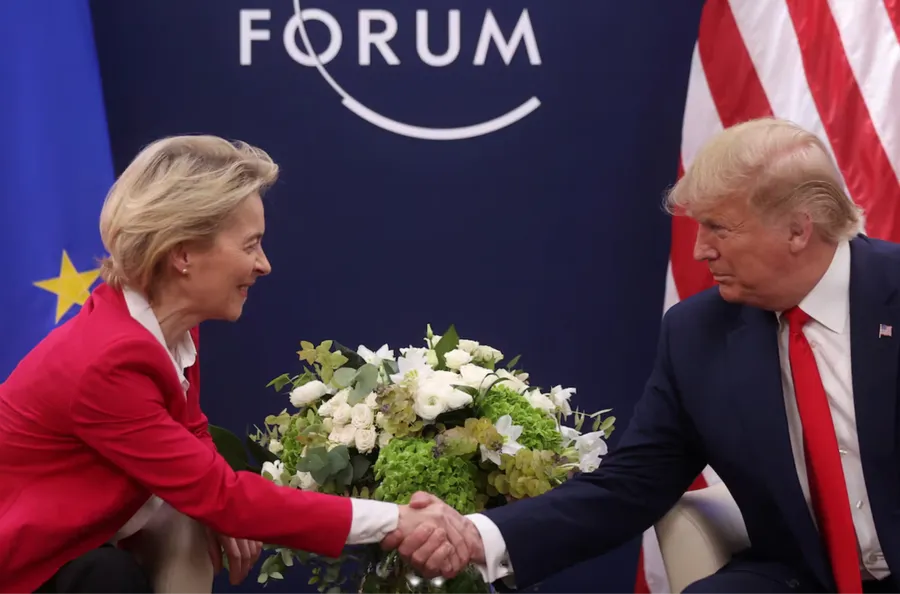Europe Strikes Back: EU Unveils Tariff Retaliation Amid Escalating U.S. Trade Dispute
by u/Case_Newmark
Brussels counters Trump’s tariffs with a $107 billion response, signaling a tougher stance while still leaving room for negotiation.
On Thursday, Europe struck back in the ongoing trade dispute. EU trade officials unveiled a more than 200 page catalog of more than 4,800 goods in response to Washington’s recent slew of tariffs. The list includes food items such as meats, soybeans, and alcohol to plastics, medical devices, and passenger cars. They are also eyeing scrap metal and chemicals used in food processing. These tariffs amount to around 107 billion dollars worth of goods; notably lesser than the 379 billion put in place by the Trump administration. No specific rate for the tariffs was mentioned.
According to Ursula von der Leyen, the goal is to facilitate negotiated outcomes with the US. “We believe there are good deals to be made for the benefit of consumers and businesses on both sides of the Atlantic,” She said in the statement. “At the same time, we continue preparing for all possibilities.”
Alongside the tariffs, the EU plans to initiate a dispute in the World Trade Organization, over the US’s blanket tariffs and the tariffs on car parts. The aim of the EU is “to reaffirm that internationally agreed rules matter and cannot be unilaterally disregarded by any WTO member, including the US.” . They also vowed to “... continue negotiations with other trade partners to identify new export markets and diversify supply sources” . Consultation for these tariffs will remain open until June 10th, giving Washington a month to respond.
The move comes amidst the realization that there is no returning to the status quo with the US. Trump has gone back on his word numerous times, and seemingly backed down. He reduced the 20% blanket tariff rate to 10%, and added a 90 day moratorium on all tariffs, which signaled to Europe a willingness to negotiate. Now, almost 60 days out from it, the truth is beginning to dawn on European policymakers that it is very likely the administration will not be backing down completely.

U.S. President Donald Trump attends a bilateral meeting with European Commission President Ursula von der Leyen during the 50th World Economic Forum (WEF) annual meeting in Davos, Switzerland, January 21, 2020. REUTERS/Jonathan Ernst/File Photo
Europe has long needed to show strength against the bullying tactics of the Trump administration. A desperate clinging to the old order is not the answer; it will simply signal to Washington that Europe is willing to get hit, and not hit back. The mentality in Europe is beginning to change, and a more aggressive posture is being taken. “If we don’t get down from 10 percent, there’s no negotiation, no deal”, a senior European Commission official said. This shows the renewed resolve of the Commission, a clear step back from the capitulation and ego preserving tactics they had taken prior.
But an eye for an eye style diplomacy could hurt both sides. A spiraling trade war between Europe and the US would lead to a disaster for both industries, something Europe would be wise to avoid. Economists warn that a full-blown trade war could drive up prices for consumers, disrupt supply chains, and reduce export competitiveness. For example, increased tariffs on soybeans could hurt European livestock farmers dependent on U.S. imports, while U.S. automakers and alcohol distillers might face higher costs due to retaliatory tariffs on car parts and bourbon respectively.
The Trump administration is already eyeing additional tariffs on lumber, trucks, and semiconductors. Thus, Europe also offered to increase LNG imports, zero for zero tariffs on car parts and industrial goods, and cooperation on AI. Offering Washington a carrot while wielding the stick is well planned diplomacy, giving Trump an offramp to de-escalate the trade tensions, while handing him a win he can deliver to his base. Within Europe, the move also serves domestic political purposes. As nationalist parties grow louder in some member states, EU leaders are under pressure to demonstrate that they can stand up to U.S. pressure without fracturing internal unity.
What the President really wants is a headline he can sell. A “deal” with Europe, no matter how hollow, gives him a win to parade. His base isn’t interested in policy nuance. Trump is an influencer, and they want a show.. Hand them a bold slogan and a photo op, and the details can rot in the footnotes.
If both sides find common ground, this episode could set the stage for a more balanced transatlantic trade framework. However, if rhetoric escalates and retaliations deepen,it could undermine trust between two of the world’s largest trading blocs at a time when geopolitical unity is sorely needed.